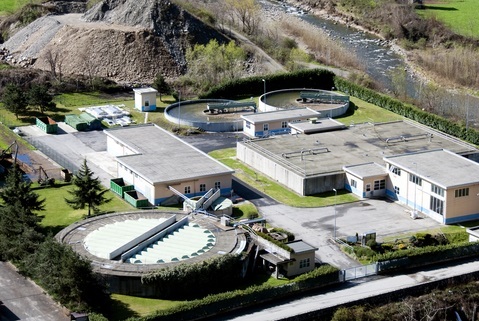
 Data Structure
Data Structure Networking
Networking RDBMS
RDBMS Operating System
Operating System Java
Java MS Excel
MS Excel iOS
iOS HTML
HTML CSS
CSS Android
Android Python
Python C Programming
C Programming C++
C++ C#
C# MongoDB
MongoDB MySQL
MySQL Javascript
Javascript PHP
PHP
- Selected Reading
- UPSC IAS Exams Notes
- Developer's Best Practices
- Questions and Answers
- Effective Resume Writing
- HR Interview Questions
- Computer Glossary
- Who is Who
Biotransformation - Introduction Types Advantages and Disadvantages
Introduction
Biotransformation, also known as biocatalysts or enzyme-catalyzed transformation, is the process of using biological catalysts to modify chemical compounds. This technology has become increasingly important in recent years as a means of producing a wide range of chemical compounds, including pharmaceuticals, flavors, fragrances, and other high-value compounds.
Types of Biotransformation
Biotransformation can be divided into two main categories: enzymatic and microbial.
Enzymatic Biotransformation
Enzymatic biotransformation involves the use of purified enzymes to catalyze chemical reactions. These enzymes can be isolated from a variety of sources, including plants, animals, and microorganisms.
One example of enzymatic biotransformation is the production of artemisinin, a drug used to treat malaria. Artemisinin is derived from the sweet wormwood plant, but its production is expensive and time-consuming.
By using a purified enzyme from a bacterium that can convert artemisinin acid to artemisinin, the production of the drug can be made more efficient and cost-effective.

Microbial Biotransformation
Microbial biotransformation involves the use of whole cells or microorganisms to catalyze chemical reactions. These microorganisms can be bacteria, yeast, fungi, or even algae.
One example of microbial biotransformation is the production of vanillin, a flavoring agent used in foods and beverages. Traditionally, vanillin has been produced from vanilla beans, which are expensive and difficult to grow. However, by using a microbial fermentation process, vanillin can be produced from simple precursors like glucose or lignin.
Advantages of Biotransformation
Selectivity
One of the main advantages of biotransformation is its high selectivity. Biological catalysts can often produce specific products with high purity, whereas traditional chemical methods may produce unwanted by-products.
Sustainability
Biotransformation is often seen as a more sustainable alternative to traditional chemical methods. Many biotransformation reactions use renewable starting materials and produce less waste than traditional methods.
Cost-Effective
In some cases, biotransformation can be a more cost-effective alternative to traditional chemical methods. Enzymes and microorganisms can often be produced at a relatively low cost, and the use of renewable starting materials can reduce production costs.
Mild Reaction Conditions
Biotransformation reactions can often be carried out at mild conditions such as low temperatures and atmospheric pressure, which reduces energy consumption and production costs.
Lower Environmental Impact
Biotransformation reactions often produce less toxic waste than traditional chemical methods, making it a more environmentally friendly approach.
Disadvantages of Biotransformation
Limited Substrate Range
The substrate ranges of enzymes and microorganisms used in biotransformation can be limited, which can restrict the types of compounds that can be produced.
Sensitivity to Reaction Conditions
Enzymes and microorganisms used in biotransformation can be sensitive to reaction conditions such as pH, temperature, and substrate concentration, which can limit their effectiveness.
Product Inhibition
In some cases, the product of a biotransformation reaction can inhibit the enzyme or microorganism used, which can limit the yield of the reaction.
High Cost of Purification
Purification of enzymes and microorganisms used in biotransformation can be expensive and time-consuming, which can limit the feasibility of large-scale production.
Stability Issues
Enzymes and microorganisms used in biotransformation can be unstable, which can limit their shelf life and the overall feasibility of large-scale production.
Applications of Biotransformation
Pharmaceutical Industry
Biotransformation is widely used in the pharmaceutical industry to produce a wide range of drugs. Enzymatic biotransformation has been used to produce drugs like antibiotics, statins, and anti-inflammatory drugs. One example is the production of semi-synthetic penicillin, which involves the use of enzymes to modify natural penicillin to improve its properties.
Food Industry
Biotransformation is also used in the food industry to produce flavors, fragrances, and other additives. Microbial biotransformation is commonly used to produce compounds like vanillin, which is used as a flavoring agent in foods and beverages.
Environmental Applications
Biotransformation can also be used in environmental applications, such as the treatment of wastewater or the remediation of contaminated soil. Microorganisms can be used to degrade pollutants, such as pesticides or industrial chemicals, into less harmful compounds.

Chemical Industry
Biotransformation is also used in the chemical industry to produce a wide range of chemicals, such as detergents, solvents, and biofuels. Enzymatic biotransformation can be used to produce chemicals like esters or amides, which are widely used in the chemical industry.
Conclusion
Biotransformation is a versatile technology that has many advantages over traditional chemical methods. It offers high selectivity, sustainability, and cost-effectiveness, making it a promising alternative in many industries.
However, it also has its limitations, such as substrate range and sensitivity to reaction conditions, which must be addressed to maximize its potential. Overall, biotransformation is a powerful tool that will continue to play an important role in the production of high-value compounds in the future.

